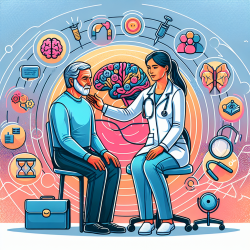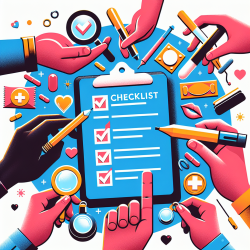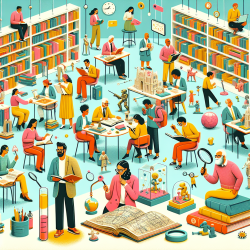As our global society becomes increasingly multilingual, the need for specialized therapeutic approaches to address the unique challenges faced by bilingual and multilingual aphasia patients becomes more evident. Drawing from the comprehensive review "La rééducation de l'aphasique bilingue" by K. Kraetschmer, this blog post aims to shed light on the intricacies of rehabilitating bilingual aphasic patients and offers practical strategies for clinicians and speech therapists seeking to enhance their therapeutic practices.
The article begins by highlighting the relative scarcity of studies focused on the rehabilitation of bilingual or multilingual individuals with aphasia, despite the growing prevalence of bilingualism due to economic, sociological, and political factors. This gap in research underscores the importance of developing more effective therapeutic interventions tailored to the needs of this diverse patient population.
Evaluating Bilingual or Multilingual Aptitude
One of the foundational steps in the rehabilitation process involves accurately assessing the patient's proficiency in each language they speak. This evaluation should consider both spoken and written abilities across different levels of proficiency. Such detailed assessments are crucial for formulating an effective therapy plan that addresses the specific linguistic needs of the patient.
However, obtaining precise information about a patient's pre-morbid language abilities can be challenging. Clinicians often need to rely on reports from family members or close acquaintances of the patient. Additionally, the phenomenon of fluctuating aptitude—where individuals may lose proficiency in a language if it is not regularly used—complicates the assessment process.
Determining the Most Appropriate Language for Rehabilitation
Deciding which language to use in therapy is not as straightforward as choosing the one in which the patient is most proficient. Factors such as the patient's emotional attachment to a language, its significance in their social and professional life, and the language spoken in their family and community all play critical roles in this decision.
For instance, a patient might have a strong emotional connection to their native language, even if they are more fluent in another language due to professional or social reasons. Ignoring such emotional ties could hinder the rehabilitation process, as the patient's motivation and psychological well-being are intimately linked to their linguistic identity.
Effective Use of the Chosen Language in Therapy
Once the most appropriate language for therapy has been identified, the next challenge is implementing an effective therapeutic strategy. This might involve overcoming practical hurdles, such as a lack of therapists fluent in the patient's preferred language. In such cases, enlisting the help of family members as translators or co-therapists can be invaluable. Not only does this approach facilitate communication, but it also reinforces the patient's social and emotional support network, further aiding their recovery.
The involvement of family members in therapy sessions can also serve as an educational opportunity, equipping them with the skills and knowledge to support the patient's language use in daily life. This collaborative approach emphasizes the importance of a supportive environment for the rehabilitation process, highlighting the role of social and cultural factors in the patient's recovery.
Embracing Multilingualism in Therapy
While focusing on a single language might be necessary in some cases, there is potential value in incorporating multiple languages into the therapeutic process. This approach can leverage the patient's existing linguistic skills to facilitate recovery, potentially leading to cross-linguistic benefits. However, the current body of research on this topic is limited, indicating a need for further investigation into the efficacy of multilingual therapy strategies.
Ultimately, the goal of therapy for bilingual and multilingual aphasia patients is not only to improve their ability to communicate but also to ensure that they can do so in a way that is meaningful and enriching to their lives. This requires a holistic approach that considers the linguistic, emotional, and cultural dimensions of the patient's identity.
In conclusion, "La rééducation de l'aphasique bilingue" serves as a valuable resource for clinicians and speech therapists, offering insights into the complexities of bilingual aphasia rehabilitation. By adopting a patient-centered approach that respects the linguistic and cultural diversity of individuals with aphasia, therapists can enhance the effectiveness of their interventions and support their patients' journey towards recovery.
For those interested in exploring this topic further and applying these insights to their clinical practice, I highly recommend reading the original research paper. To read the original research paper, please follow this link: La rééducation de l'aphasique bilingue.










